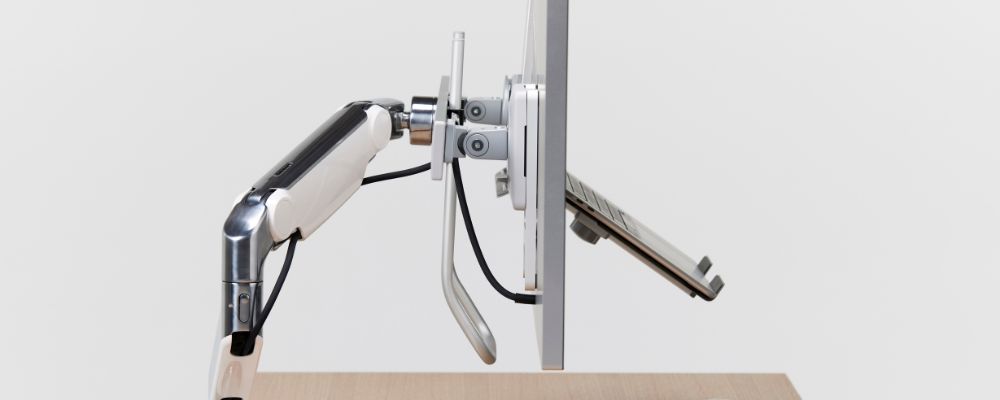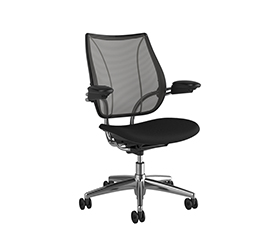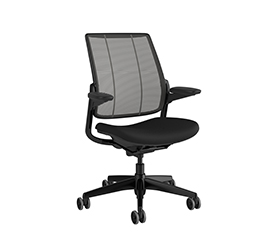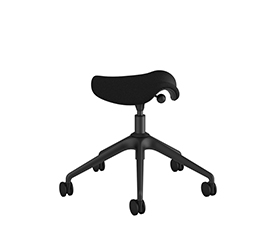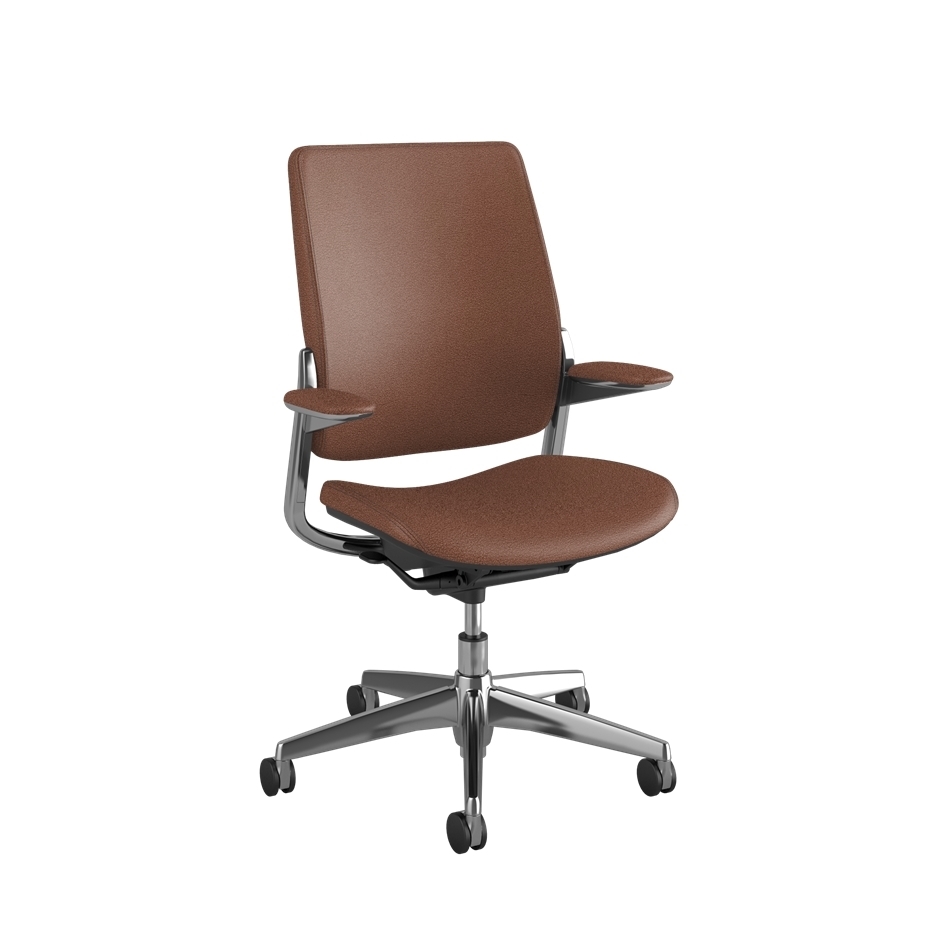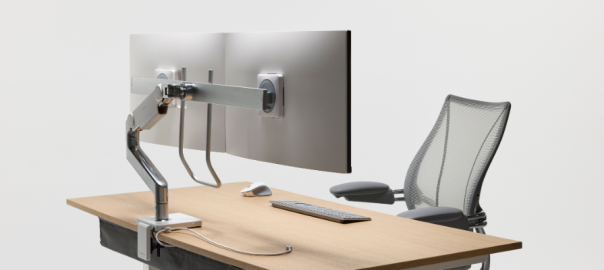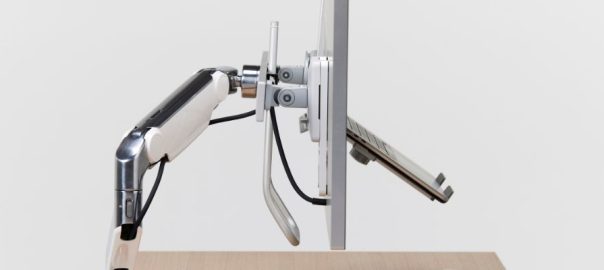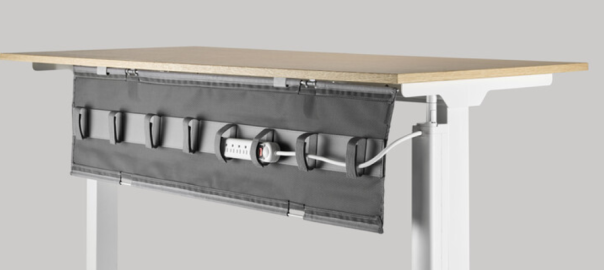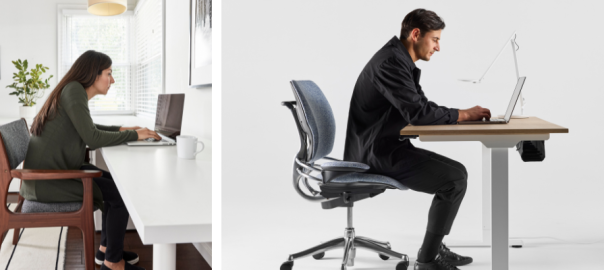Proper ergonomic monitor positioning is important to maintain comfort and health, especially for those who spend long hours working at a desk. By adjusting your monitor’s height, distance, and angle, you can significantly reduce neck, back, and eye strain, helping you avoid discomfort and fatigue.
Plus, the benefits of ergonomics go beyond just physical relief—they also lead to improved focus and productivity by creating a work environment that supports your well-being. In this guide, we’ll analyse how far the monitor should be from your face and the key steps to optimise your monitor setup, allowing you to create a comfortable and efficient workspace that boosts both your health and performance.
What Is Monitor Ergonomics?
Monitor ergonomics refers to setting up your monitor in a way that promotes comfort and reduces the risk of strain or injury. It focuses on the proper placement of your screen to support good posture and prevent discomfort over time.
This involves adjusting the height and distance of your monitor to suit your natural line of sight, helping you maintain a proper desk posture. For example, your monitor should be about an arm’s length away and positioned at eye level, so you avoid straining your neck or eyes.
Common Problems Caused by Poor Monitor Setup
A poor monitor setup can lead to various physical issues that affect your comfort and productivity. When your monitor is not properly adjusted, it can strain your body and impact your performance. Here are some common problems caused by a bad monitor setup:
- Neck and Back Pain: If your monitor is too high or low, it forces you to tilt your head awkwardly, leading to neck and back strain over time. This can result in chronic pain and discomfort, affecting your posture.
- Eye Strain: A monitor that’s too close, too far, or at the wrong angle can cause eye strain. Looking at a screen for long periods without proper adjustments can lead to dryness, blurred vision, or headaches.
- Shoulder Tension: Poor monitor positioning can cause you to hunch forward or strain your shoulders. This can lead to muscle stiffness and tension, making it difficult to stay comfortable for extended periods.
- Reduced Focus and Productivity: Discomfort from improper monitor setup can make it harder to concentrate on your tasks. As you adjust your position repeatedly or take frequent breaks to relieve pain, your work efficiency may suffer.
Read More: Effect of Poor Posture
Signs You Need to Reassess Your Monitor Ergonomics
If you experience discomfort or pain while working at your desk, it might be time to reassess your monitor setup. Small issues with monitor ergonomics can have a big impact on your health and focus. Here are some signs that indicate your current setup isn’t working for you:
- Shoulder Stiffness: A monitor positioned too high or low can cause you to lean forward or hunch, leading to shoulder tension. This may be a sign that your setup is affecting your proper desk posture.
- Frequent Neck or Back Pain: If you’re constantly shifting your neck or back to see the screen, your monitor may not be at the correct height. This can lead to neck and back pain. Check if your monitor is at eye level to avoid unnecessary strain.
- Eye Discomfort: If you’re squinting or frequently rubbing your eyes, the distance or angle of your monitor might not be right. How far should the monitor be from your face? It should be about an arm’s length away and positioned so you don’t need to strain your eyes or blink excessively.
- Frequent Headaches: Regular headaches or blurry vision may be caused by improper monitor setup, often due to screen glare or poor positioning. Monitor height ergonomics should be adjusted so that you aren’t straining your eyes.
- Reduced Focus or Fatigue: If you feel distracted or tired while working, discomfort from poor monitor setup might be draining your energy. A minimal desk setup with proper adjustments can help you stay more comfortable and productive throughout the day.
If you notice any of these signs, it’s important to reconsider your setup. Adjusting your ergonomic furniture, like getting the best ergonomic office chair and fine-tuning monitor height ergonomics, can improve comfort and prevent long-term issues.
The Ideal Monitor Setup
To create the ideal monitor setup, it’s important to adjust your workspace so that it promotes comfort and reduces strain. A well-set monitor helps you maintain proper desk posture and prevent long-term health issues. Here’s how you can achieve the best setup:
- Monitor Height: Your monitor should be at eye level or slightly below. When seated, your eyes should naturally align with the top of the screen. This helps to avoid neck strain. Monitor height ergonomics plays a key role in reducing discomfort, allowing you to work without constantly adjusting your position.
- Distance from Screen: The distance between you and the screen should be about an arm’s length. How far should the monitor be from your face? If it’s too close, it can strain your eyes; too far, and you might lean forward to see the screen. Proper placement helps reduce eye strain and the effect of poor posture.
- Positioning: Your monitor should be directly in front of you to avoid twisting your neck. If you use multiple monitors, arrange them so that the primary screen is centred and the secondary screen is slightly angled.
- Seating and Ergonomic Furniture: Invest in ergonomic furniture, such as the best ergonomic office chair. This type of chair provides support for your back and allows you to sit comfortably with your feet flat on the floor. The chair should be adjusted so that your arms rest at a 90-degree angle when typing.
- Minimal Desk Setup: Keep your desk clutter-free to help maintain focus and promote a healthy working environment. A minimal desk setup means less strain on your body and a more productive workspace.
Tips to Enhance Monitor Ergonomics
Improving your monitor’s ergonomics can significantly reduce discomfort and help you stay productive. Here are some practical tips to make sure your workspace promotes better posture and reduces strain:
Adjust Your Monitor Height
Your monitor should be at eye level or just slightly below. The top of the screen should be in line with your eyes when you are sitting comfortably. This position reduces neck strain and helps maintain proper desk posture. When the monitor is too high or too low, you might end up craning your neck, leading to discomfort.
Monitor Distance
To avoid eye strain, the monitor should be about an arm’s length away from you. How far should the monitor be from your face? If it’s too close, your eyes will have to work harder to focus. If it’s too far, you may find yourself leaning forward to see clearly. Finding the right distance is key to avoiding the effect of poor posture.
Position the Monitor Correctly
The monitor should be directly in front of you. If you work with multiple screens, position the main screen straight ahead and the second one slightly to the side. This will prevent unnecessary twisting or turning of your neck.
Invest in Ergonomic Furniture
A best ergonomic office chair supports your back and keeps you sitting upright. It should allow your feet to rest flat on the floor with your knees at a 90-degree angle. Combining a good chair with a proper desk setup can make a major difference to your comfort and productivity.
Keep Your Desk Organised
A minimal desk setup allows you to work without distractions. Having fewer items on your desk helps keep your arms at a comfortable length while typing and reduces clutter that can lead to awkward body positioning.
Take Regular Breaks
Even with the right setup, sitting for long periods can still cause discomfort. Take short breaks every 30 to 60 minutes to stand up, stretch, and adjust your posture. This helps prevent muscle stiffness and gives your eyes a rest from the screen.
By following these tips, you can improve your monitor ergonomics, reducing the risk of ergonomic hazards and supporting better overall health. If you experience discomfort, try to learn how to correct posture to prevent further strain.
Additional Tools and Accessories to Improve Monitor Ergonomics
In addition to adjusting your monitor and chair, there are several tools and accessories that can further improve your monitor ergonomics and make your workspace more comfortable. These accessories can reduce strain on your body and enhance your overall posture:
Monitor Stand or Arm
A monitor stand or monitor arm helps you easily adjust the height, distance, and angle of your device. This helps you achieve the optimal monitor height ergonomics, making sure that your monitor is at eye level and preventing neck strain. A monitor arm also offers flexibility, allowing you to move the screen as needed without compromising your posture.
Keyboard and Mouse
A keyboard and mouse placed at the right height and angle can prevent wrist strain. Look for ergonomic furniture options like a keyboard tray or an adjustable desk that allows you to keep your arms at a 90-degree angle while typing. Consider an ergonomic mouse or a split keyboard that reduces the strain on your wrists and hands.
Wrist Rest
Adding a wrist rest to your keyboard or mouse can provide extra support and reduce the chances of ergonomic hazards, such as carpal tunnel syndrome. It helps keep your wrists in a neutral position, reducing pressure during typing or clicking.
Footrest
If your chair doesn’t allow your feet to rest flat on the floor, a footrest can help. This accessory ensures that your feet are properly supported, promoting better posture and circulation. It also encourages proper alignment of your lower body and reduces strain on your lower back.
Blue Light Filter
To lower eye strain caused by prolonged screen time, a blue light filter for your monitor can help lower the negative effects of blue light from digital screens. This can reduce fatigue and discomfort in your eyes, especially during long working hours.
Desk Organiser
A minimal desk setup can be maintained with an ergonomic desk organiser to keep your workspace clean and free of distractions. Having everything in its place ensures you don’t have to reach awkwardly for items, which can negatively affect your posture.
Conclusion
Getting your monitor position right is more than just about comfort—it’s about promoting long-term health and productivity. By implementing the right ergonomic practices, you can enjoy the benefits of ergonomics, such as improved posture, reduced physical strain, and better focus. Simple modifications to your workspace can go a long way in supporting your overall well-being, making your work hours more comfortable and productive.

